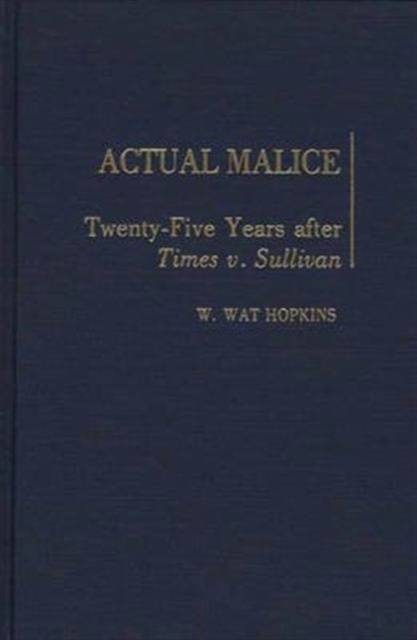
- Afhalen na 1 uur in een winkel met voorraad
- Gratis thuislevering in België vanaf € 30
- Ruim aanbod met 7 miljoen producten
- Afhalen na 1 uur in een winkel met voorraad
- Gratis thuislevering in België vanaf € 30
- Ruim aanbod met 7 miljoen producten
Omschrijving
Published to coincide with the 25th anniversary of the landmark Supreme Court decision in New York Times v. Sullivan, which changed the face of libel law, this book is the first in-depth examination of the actual malice rule constitutionalized in that decision. The author offers a detailed evaluation of the current status of the rule and produces significant new information about the history and working of libel law. He argues that, contrary to much of the scholarly criticism and opinions expressed in the popular press, the actual malice rule is working and should be retained as an integral feature of libel law. Finally, he proposes some changes which would help libel law work more smoothly and effectively. A significant addition to the body of work on libel law, this book will be an invaluable resource for students of law and journalism as well as to practicing attorneys and journalists.
Hopkins begins with an examination of the history of the actual malice rule and the definition Justice Brennan attached to the rule. He explores how the modern definition of actual malice relates to definitions accepted before 1964 and analyzes how the appellate courts have defined and applied the rule since the 1964 decision. Subsequent chapters compare Times Rule Actual Malice with common law actual malice and offer a penetrating discussion of how well the actual malice rule is working in modern libel law. Hopkins concludes that Times Rule Actual Malice is working effectively to balance the interest in robust public debate with the interest in protecting reputation.
Specificaties
Betrokkenen
- Auteur(s):
- Uitgeverij:
Inhoud
- Aantal bladzijden:
- 226
- Taal:
- Engels
- Reeks:
Eigenschappen
- Productcode (EAN):
- 9780275932466
- Verschijningsdatum:
- 19/05/1989
- Uitvoering:
- Hardcover
- Formaat:
- Genaaid
- Afmetingen:
- 156 mm x 235 mm
- Gewicht:
- 498 g

Alleen bij Standaard Boekhandel
Beoordelingen
We publiceren alleen reviews die voldoen aan de voorwaarden voor reviews. Bekijk onze voorwaarden voor reviews.











